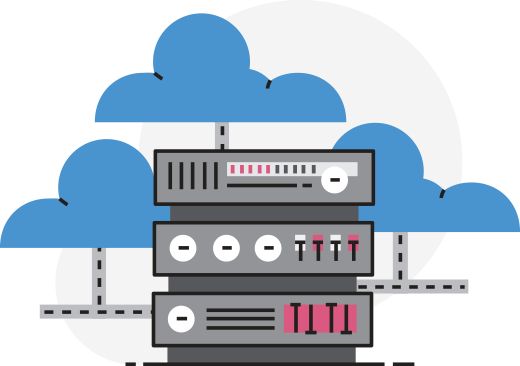Internet of Tings is causing ripples across the domain of IT industry. It is evident from growth of IaaS (Infrastructure as a Service) products, which is galloping at year over year growth rate of 38.4 percent and projected to touch $22.4 billion in current fiscal.
IDC study has projected that services based on cognitive computing will rule consumer interactions to the extent that half of the people across the globe will opt for such solutions by the year 2018. These developments mark the beginning of a new digital era in India and are affirmations of India’s digital initiatives.

Relevance of IaaS in current scenario
There have been endless discussions and debates about how to reduce cost of enterprise IT infrastructure. It is found that cost of hardware equipment and maintenance of on premise IT infrastructure can be significantly reduced by moving as many IT workloads to cloud as possible.
In addition to huge expenses of running on premise IT infrastructure, considerable amount of time and efforts are required for maintenance and operation of entire IT infrastructure. Enterprises have to hire skilled technicians to look after day to day functioning and monitoring of IT equipment. In addition to this, complex Disaster Recovery plans are required for safeguarding mission critical data.
While considering migration of IT infrastructure to cloud, one needs to identify and evaluate specific workloads that can be migrated to cloud for better optimization of costs without hampering business continuity and data security.
Infrastructure as a Service has been gaining increasing significance in this context due to coast efficiency and reliability. It has been already implemented or is under active consideration in almost half of the enterprises that have to deal with complexities and cost intensive management of onsite IT infrastructure.
Proliferation of cloud solutions
Emergence of internet enabled devices has given rise to Internet of Things. We are witnessing a big revolution that is transforming devices that are used in our day to day lives being empowered with internet connectivity.
The first device that was transformed was our humble mobile phone that was only capable of making and receiving calls while on the go. Smart phones have added amazing functionalities to the mobile phones that are now capable of executing mind boggling tasks. This has caused advent of many products that are internet enabled.
IoT has underlined need for cloud adoption since more and more internet enabled devices are being added every day. These products are generating massive volumes of data. According to one study, 20 billon products will be part of IoT by the year 2020. The growth of data is also pushing demand for IaaS products in vertical direction.
One more major driver for IaaS is growth in number of small and new enterprises that are looking at cloud for improving their capabilities in a cost effective manner.
According to a reference from WindowsITPro.com, the highest number of workloads, that are being shifted by enterprises to cloud are related to testing, developing, or pre-production workloads. These are followed by new production workloads and cloud enabled disaster recovery solutions.
Cloud applications are not only time saving but also offer remarkable cost efficiency in comparison to traditional solutions for testing and development of new software applications.
Salient attributes of IaaS
Streamlines enterprise IT processes- The most visible and immediate impact of IaaS is shifting of focus of IT infrastructure from on premise to cloud. Since all the resources of IT infrastructure are efficiently managed by IaaS service provider, there is considerable streamlining of internal IT processes and the IT manpower is empowered to dedicate itself to more creative and productive workloads.
Uninterrupted service- Since every aspect of IT infrastructure can be offered as service, organizations can achieve flexibility as well as scalability of their resource without any disruptive events. Cloud computing strives on redundant support systems and networking. Businesses can prosper with help of seamless availability of their online presence.
On-demand scalability- Volatile nature of market forces requires organizations to be perpetually prepared to face challenges of fluctuating demands. Cloud backed services including IaaS are instantly scalable. Businesses can scale up or scale down resources dynamically in cloud environment. This also avoids unnecessary investment in resources that could be left unutilized in the absence of demand. IaaS helps organizations optimize their resources without any service disruptions.
Utility model- IaaS is gaining popularity due to its utility based payment method. Unlike traditional hosting methods that use subscription based payment, users of IaaS pay only for the resources that are consumed by them in specific period. Pay-per-use is obviously more economical and practical payment model than subscription based model.
In conclusion
IaaS eliminates the need to build operate and maintain on premise IT infrastructure. It also obviates other IT overheads that can be associated with staffing, cooling, power, security, bandwidth, and other administrative components of on premise IT infrastructure. These services are provided from top tiered data centers that are owned and operated by established cloud service providers.






 Live Chat
Live Chat
